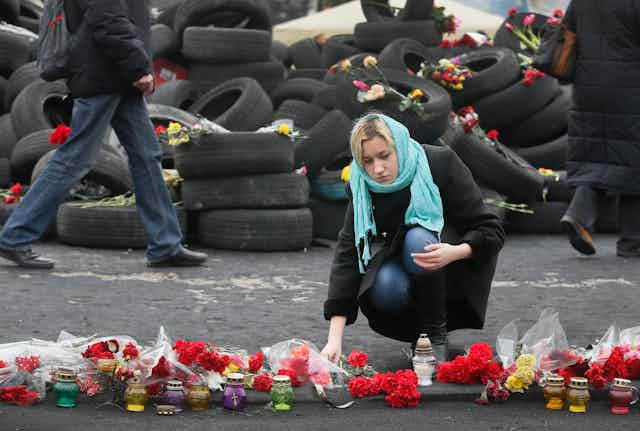Having given himself the authority to invade Ukraine, Russian president Vladimir Putin is now pushing right up against the red lines, if he has not already overstepped them. This is the point at which regular diplomacy becomes inoperative, and the action becomes coercive, either through sanctions in the least bad case, or in the worst, war.
Where exactly are the red lines? That may only be really revealed by events. But we have some clear markers. If Russia invaded the East Ukraine mainland, around Kharkiv or Donetsk for example, that would be the red line for Kiev and the West. If sizeable armed groups of Ukrainian extremist nationalists invaded Kharkiv or Donetsk and entered into a real fight with local people there being killed, that would be crossing Putin’s red line. That would also be the case if the Ukrainian military attempted to push all Russian troops back into their barracks in Sevastapol.
For many people Russia has already crossed the red line in these last few days in Crimea. While criticising the EU for interference in Kiev, and forgetting that its mediation during the last days of Yanukovych stopped the killing in Kiev, Russia deployed troops to take over government buildings and airports. Well-armed, uniformed and equipped troops did their work with all identification badges removed and even the number plates of their military vehicles removed, and at first they refused to say who they were - “nobody knows”. Like a story for small children. This last weekend Russian troops have openly surrounded and blockaded Ukrainian military bases in Crimea, humiliating Kiev.
US president Barack Obama calls for the Russian troops to get back into their barracks, but Putin ignores this.
What happens when the red lines are crossed? As between Russia and Ukraine it would mean war, a real war, with incalculable consequences. Ukraine’s prime minister, Arseny Yatseniuk, has already described Putin’s announcement as a declaration of war. The Ukrainian armed forces have received a general mobilisation order. The idea of Russians and Ukrainians really killing each other is mercifully still “unthinkable”, yet on this centennial anniversary of the first world war, we are reminded that big wars can be triggered “accidentally” by small incidents. Putin’s presumed calculation is that his self-authorisation to go to war is intended to deter Kiev from challenging him in Crimea, or to deter extremists from West Ukraine from attacking in the East. But there is no lack of small incidents ready and waiting to happen in Crimea and East Ukraine.
Diplomatic measures
For the EU and US it would mean cold war, with progressive actions to make of Putin an international pariah and to build up sanctions against Russian economic interests. This has already begun, with Western withdrawals from preparatory meetings for the G8 summit in June. The G8 could easily be discontinued in favour of returning to the old G7. To which could be added scrapping the EU-Russia summit in Sochi also in June, and resolutions condemning Russia put to the OSCE and Council of Europe, or proposals to suspend Russia’s membership.
US secretary of state, John Kerry, has already sketched the sanctions toolkit: visa bans, asset freezes, trade and investment measures. The EU could do the same with greater impact and develop cooperatively with the US steps to substitute increasing amounts of US for Russian gas, the latter having declined to about a third of the EU’s total gas imports. Russia’s economy is already weak, and a further weakening would endanger Putin’s political base.
There is still a small margin of possibility for cool heads to arrange de-escalation. There is a group of reasonable people now assembled as the government of Ukraine. But they do not yet have the street under control, and would need somehow to get the extremist militias off the street and into the democratic political process – let there be early parliamentary elections and let them try to get a few seats in the Rada.
The EU for its part has to make it clear that its support for the new leadership in Kiev is absolutely not a winner-takes-all challenge to Russia’s economic interests. The origin of the conflict was Yanukovych’s refusal to sign with the EU under pressure from Putin to join his customs union. Even Putin must now see that Ukraine will not join his customs union. But Ukraine could have high-quality free trade with both the EU and Russia, and with goodwill these arrangements could perfectly well avoid be designed technically to avoid conflict. How much pain does there have to be before there can be a return to such mundane and peaceful normality?

